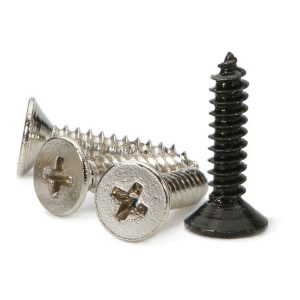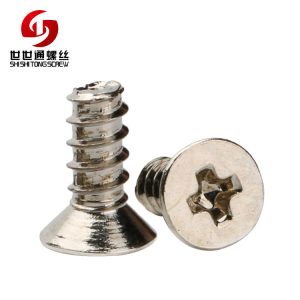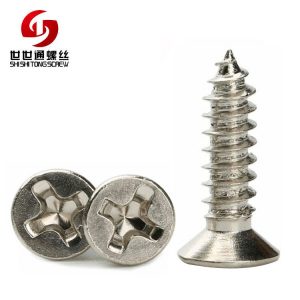Selection and application of flat head phillips self tapping screw
When screwing into the flat head phillips self tapping screw, power (called screwing torque) is required to form or cut the connected internal threads.

Since the torque is continuous, after the flat head phillips self tapping screw are installed in place, tighten and reach a certain level (called the limit torque) to know that the screws are broken, twisted, or threaded off, and the screws are pulled out from the connecting parts. , causing the screw to fail.

The most important question in the application of flat head phillips self tapping screw is: What is the correct tightening torque? Screw in the screws and tighten the connections without damaging the screws or connectors. How much torque does the application use?
It is obvious that the correct screwing torque is a certain value between the screwing torque and the limit torque. However, it is obviously unreasonable to recommend the intermediate value as the optimum value. Then, several factors will affect the screwing torque and the limit torque. Mainly include screw form, size, chemical composition, hardness, the thickness of the joint material, and methods for processing pre-formed holes.

However, the most important is the hole diameter of the pre-made hole to be screwed into the flat head phillips self tapping screw, all other factors will affect the aperture. The final determination of the size is of the utmost importance. If the hole is too large, the screw can be easily screwed in, but it is not good for the connection. Even if the screw may be pulled out at a fairly low limit torque. If it is too small, the screwing torque will be too large and the screw will be broken. Even though the screws can be mounted in place and fastened, the range between the screwing torque and the ultimate torque will be so narrow that it can be destroyed in production assembly.

If you want to customize flat head phillips self tapping screw, please send an email: annie.li@szsst88.com